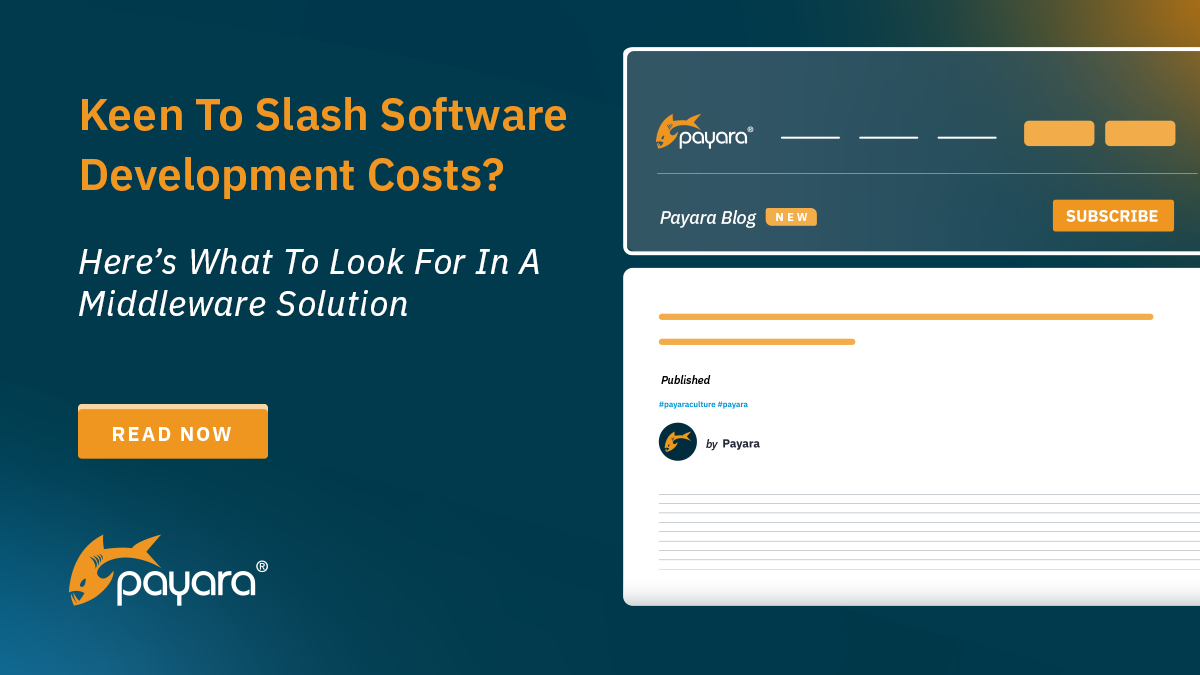 6 minutes
6 minutes
Conf42 IoT 2024: At the Edge of Robotic Applications
At the latest Conf42 Internet of Things (IoT) 2024 conference, our Payarans deliver a keynote, titled “At the Edge […]

When it comes to clustering and distributed computing performance, some of the challenges you have to overcome involve cache invalidation and coordination. Fortunately, both Payara Server and Payara Micro come with EclipseLink, which supports cache coordination and invalidation out of the box. This blog will explain how to configure this feature for your Payara Data Grid. We would also like to thank Sven Diedrichsen who is the community member that created the Hazelcast cache coordination.
In order to utilize the cache in JPA, it needs to be turned on. Turning on the cache in JPA can be accomplished using persistence.xml, annotations or both:
<shared-cache-mode> element inside persistence.xml@javax.persistence.Cacheable entity annotation (JPA 2.0 and above)@org.eclipse.persistence.annotations.Cache entity annotation (EclipseLink proprietary, use as a last resort)|
<shared-cache-mode> element value
|
Description
|
|---|---|
| ALL | Try to Cache all entities |
| ENABLE_SELECTIVE | Try to Cache only entities that are selected by @Cacheable |
| DISABLE_SELECTIVE | Try to Cache all entities, except those selected by @Cacheable(false) |
| NONE | Disable the cache |
| UNSPECIFIED | Use EclipseLink default |
The easiest method by far, using the Hazelcast Cache Coordination Protocol requires no management, no code and minimal configuration:
eclipselink.cache.coordination.protocol propertyclipselink.cache.coordination.channel propertyThe channel property is optional, but is highly recommended if the application has more than one Persistence Unit. Best practice is to name the channel after the persistence unit.
Here is a complete example below:
<?xml version="1.0" encoding="UTF-8" ?> <persistence version="2.2" xmlns="http://xmlns.jcp.org/xml/ns/persistence" xmlns:xsi="http://www.w3.org/2001/XMLSchema-instance" xsi:schemaLocation="http://xmlns.jcp.org/xml/ns/persistence http://xmlns.jcp.org/xml/ns/persistence/persistence_2_2.xsd"> <persistence-unit name="MyPU" transaction-type="JTA"> <properties> <property name="eclipselink.cache.coordination.protocol" value="fish.payara.persistence.eclipselink.cache.coordination.HazelcastPublishingTransportManager"/> <property name="eclipselink.cache.coordination.channel" value="MyPUChannel"/> </properties> <jta-data-source>jdbc/myDataSource</jta-data-source> <shared-cache-mode>DISABLE_SELECTIVE</shared-cache-mode> </persistence-unit> </persistence>
Yup, it’s that easy!
If you’re running Payara Platform 5.181 or earlier, or Payara Platform 4.x, you can use the JMS Cache Coordination Protocol as an alternative method. Most of the configuration is the same as with Hazelcast protocol as described above, but with the following differences:
<property name="eclipselink.cache.coordination.protocol" value="jms-publishing"/>EclipseLink protocol JMS connection factory defaults to jms/EclipseLinkTopicConnectionFactory – so we want to keep the default to cut down on configuration.
You can use the asadmin commands below or configure the JMS resources via admin console:
# Create a JMS connection pool $ asadmin create-connector-connection-pool --connectionDefinitionName=javax.jms.TopicConnectionFactory --resourceAdapterName=jmsra jms/EclipseLinkTopicConnectionFactory-Connection-Pool # Create JMS connection pool resource with jms/EclipseLinkTopicConnectionFactory JNDI name $ asadmin create-connector-resource --poolName=jms/EclipseLinkTopicConnectionFactory-Connection-Pool --target=domain jms/EclipseLinkTopicConnectionFactory # Create resource references for each instance / cluster / Data Grid element desired $ asadmin create-resource-ref --target=server jms/EclipseLinkTopicConnectionFactory # Create EclipseLink topic $ asadmin create-jms-resource --resType=javax.jms.Topic --property=Name=EclipseLinkTopic jms/EclipseLinkTopic
You can drop the MDB anywhere in your application’s source packages.
MDB Example for EclipseLink 2.5+
 6 minutes
6 minutes
At the latest Conf42 Internet of Things (IoT) 2024 conference, our Payarans deliver a keynote, titled “At the Edge […]
 5 minutes
5 minutes
Java has been a core element of enterprise application development for decades, and its relevance will continue to grow […]
 5 minutes
5 minutes
For technology companies, cost effectiveness in software and application development isn’t just about saving money. It is about delivering […]
Great post! Does the JMS coordination also work when resources are defined via annotations/deployment descriptor? That eliminates management there too.
Hi Lenny, thanks for this blog post.
I’m having some issues to enable the EclipseLink cache coordination in a setup of 2 standalone Payara 4.1.2.148 server instances.
Hazelcast is configured for AWS and the 2 servers are joining in a HZ cluster. I have configured the persistence as in your example and I have dropped the MDB and change it for my persistence unit.
The JPA cache coordination doesn’t work when changing the entity values on one server. I’ll get the old values on the other server.
I was wondering if the HZ cluster will automatically configure itself as a JMS cluster or I’ll need to create a JMS cluster between the 2 servers?
Thank-you for any feedback on this issue.
Can I have an example application for JPA Coordination cache? . Pl give the link. It will be very helpful
Hi Kamlendu,
there is a good example project provided by Hans here: https://github.com/thehpi/cache-coordination
Hi Lenny I’m trying to get this working but no luck. I created a little test application for this: https://github.com/thehpi/cache-coordination
Would be great if you could point me in the right direction.
Hi Hans,
Could you please post to https://groups.google.com/g/payara-forum where a few more of the team can see this and hopefully offer some advice.
Many thanks.